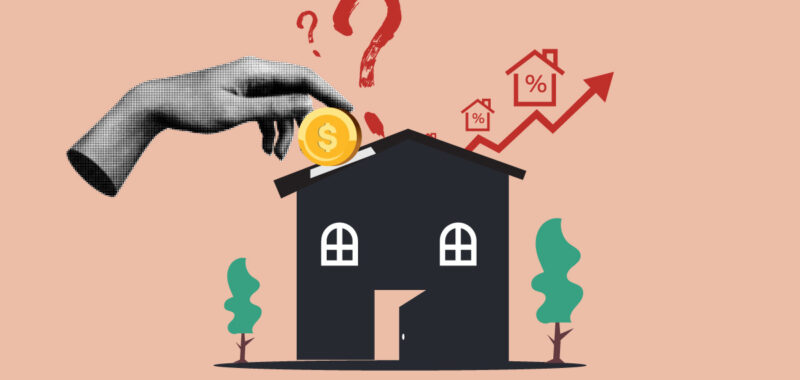Homeowners have generally done well over the last few years in accumulating home equity wealth. Since the onset of the pandemic, average equity per borrower increased by about $117,000 nationally, totaling almost $312,000 per mortgaged borrower. Aggregated across borrowers with a mortgage, home equity adds up to almost $17.5 trillion. Adding homeowners without a mortgage, who own their home free and clear, total households’ equity amounts to over $35 trillion. With total valuation at almost $50 trillion of the U.S. housing market, home equity now increasingly belongs to homeowners themselves — a sharp turn from the post-Great Financial Crisis era when homeowners were largely underwater and owned much smaller share of the U.S. housing value.
Home prices drove most of the increase, particularly since the pandemic, with the cumulative jump in home prices at 47% nationally. Given the slower rate of home price gains in the years prior to the pandemic, the 4-year increase in home equity through early 2000 was $48,000 – less than half the increase seen since early 2000.
And while home price changes drive a significant portion of home equity changes for a homeowner, equity also depends on withdrawal though home equity loans or cash-out refinances, but also losses from natural disaster, and by extension, protection of equity via homeowners’ insurance plans in case of disasters.
Home price gains have remained relatively robust over the last few years, despite a significant surge in mortgage rates and inflation pressures which may have been challenging for some households. And while the reasons for continued price growth is a topic for another commentary, it is interesting to note that home prices were up in both 2023 and 2024, by about 4.1% and 4.4% respectively. As a result, annual home equity increased by almost $22,000 per mortgaged borrower in Q3 2023. On the other hand, over the last year (leading to Q3 2024), annual home equity increased by only $5,700 and declined by $4,000 from the prior quarter, Q2 2024.
Since the onset of the pandemic, home equity generally declined during the periods of weak or declining home prices, such as the second half of 2022, winter of 2023, and again in the fall of 2024. Thus, as a result of stalling home price gains since June of this year, average equity is now $4,000 lower from the peak of almost $316,000.
Register today to attend the Housing Economic Summit in Dallas, on Feb. 26, 2025 and hear Daren Blomquist in person. The summit is designed to give you a comprehensive understanding of the economic factors driving the housing market in 2025 — and what it all means for your business.
In 2024, there were five regions of the country where home prices weakened and posted year-over-year declines in October – Florida, Texas, Idaho, Washington and Northern California. The largest declines were in Punta Gorda-Sarasota-Ft Myers area in Florida, where home prices fell by 6.3% in Punta Gorda and consequently home equity was down some $56,000 per borrower. In Texas, home prices declined in the regions from north of Austin to McAllen area, leading to about a $27,000 decline in equity in Austin. Some of the largest declines were in Northern California where home prices fell almost 5% in Napa resulting in a $177,000 decline in equity per borrower.
In 2025, with home prices expected to remain steady and to appreciate at a much slower rate, significant equity gains will be difficult to attain. CoreLogic latest HPI forecast suggests that home prices will only increase by about 2% on average in 2025 and in some markets even less than that particularly those that have already seen weakness throughout 2024.
Home prices are expected to remain weak and potentially record an average decline in Northern California, particularly the Bay Area, but also areas along Florida’s Gulf Coast which continue to be challenged by natural disasters and have as a result seen notable weakening of home buying demand. In addition, continued weak price gains are expected in parts of Texas, but also Arizona, and throughout the Midwest where home prices have seen a boost in the recent year. At the state level, District of Columbia, Texas, Arizona and Washington will see less appreciation than the 2% national average.

